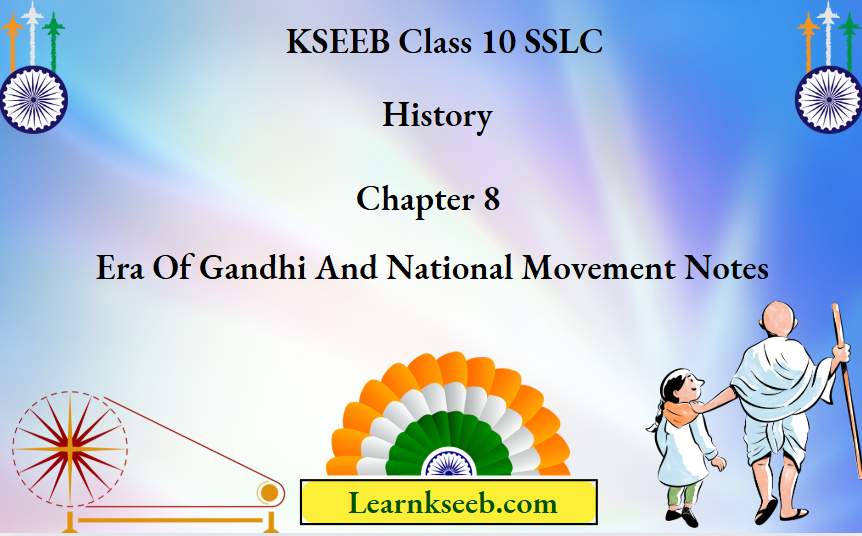KSEEB Solutions for SSLC Class 10 History Chapter 8 Life of Gandhiji, Gandhiji’s Beginning Struggles In India, And The Achievements Of Gandhiji’s Inner Life
- The period between 1920 and 1947 is known as the Gandian Era.
- Mohandas Karamchand Gandhi (popularly called Bapu) was born on 2nd October, 1869 in Porbandar of present day Gujarat’s Kathiawar district.
- Gandhiji lived in South Africa for twenty long years.
- He opposed the Apartheid Policy which discriminated between the dark-skinned and pale-skinned people and invented a new tool of protest called ‘Satyagraha’. Gokhale was the political guru of Mahatma Gandhi.
- He established the Sabarmati Ashram in Ahmedabad to give institutional shape to his struggles.
- In 1917, Gandhiji launched the Champaran Movement in support of Indigo farmers.
KSEEB Class 10 SSLC History Chapter 8 notes
In 1918, he started a movement in support of the mill workers of Ahmedabad.
- In the same year, a protest was held in Kheda village of Gujarat to oppose land taxes.
- He employed ‘Passive Resistance’, ‘Non-Violence’ and ‘Satyagraha’ as his major strategies in his struggles.
- The word ‘Satyagraha’ means ‘the assertion of truth’. Gandhiji firmly believed that one should face violence with Ahimsa and Satyagraha.
- Gandhiji said that Hindus and Muslims are two eyes of India.

SSLC History Notes On Era of Gandhi and National Movement Jallianwala Bagh Massacre, Khilafat Movement, Non-Cooperation Movement
- The British started controlling the nationalists by implementing the Rowlatt Act in 1919.
- Gandhiji formed an association named ‘Satyagraha Sabha’ to oppose the provisions of the Act of 1919.
- Gandhiji had called for one day hartal due to which various leaders were arrested in Punjab.
- To protest these arrests, people peacefully gathered in Jallianwala Bagh on 13th April 1919, the Baisakhi festival day.
Era of Gandhi and National Movement SSLC History notes
- General Dyer fired at the peacefully assembled crowd there and killed almost 380 protestors.
- This became the reason for the launch of the Non-Cooperation Movement Gandhiji.
- The Sultans of Turkey were also the religious leaders of Turkey and were known as ‘Caliphs’.
- During the First World War, the British harassed the Caliph and this was protested by the Muslims worldwide.
- In India, Muhammad Ali and Shaukat Ali started the Khilafat Movement in support of Turkey in 1919.
- Gandhiji extended support to this movement.
- The Congress passed a resolution to conduct Non-cooperation Movement in a special national convention held in Calcutta on 4th September 1920.
Class 10 History Chapter 8 Era of Gandhi summary
It aimed at creating awareness among common Indians regarding the misrule of the British.
- As an impact of the Non-Cooperation Movement, the freedom movement of India became a people’s movement.
- On 5th February 1922, a group of almost 3000 farmers assembled in front of the police station to protest against a
- British officer who had beaten the Congress workers when they were protesting in front of an arrack shop.
- The police started shooting from inside the police station.
- Agitated by this, the Indians torched the police station and all the 22 policemen were charred to death. Similar incidents occurred in other places also.
- As a result of this, Gandhiji withdrew the Non-Cooperation Movement on 12th February, 1922.
- This decision of Gandhiji led to a political vacuum.
- Swaraj Party was founded by Motilal Nehru and C. R. Dass.
